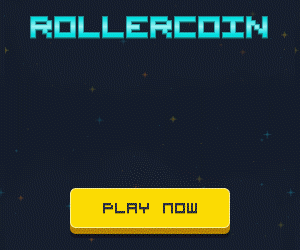In what is likely to be the most anticipated event within the cryptocurrency community in 2022, the Ethereum mainnet is set to merge with the Beacon blockchain’s proof-of-stake system.
Called “The Merge,” it will mark the end of the Ethereum proof-of-work we know today and will give way to Ethereum 2.0 – the version that will be based on a proof-of-stake consensus algorithm.
We’ve compiled a very detailed guide on everything you need to know about Ethereum 2.0 which you can check out here. Below, we focus on the details surrounding the merge, some brief technical aspects, timelines, and also debunking some of the most common misconceptions.
The merge is still expected to happen around Sep 13-15. What's happening today is the Bellatrix hard fork, which *prepares* the chain for the merge. Still important though – make sure to update your clients!
— vitalik.eth (@VitalikButerin) September 6, 2022
What is the Ethereum merge?
As mentioned above, “The Merge” is a term, cryptographic jargon, if you will, that is used to describe Ethereum’s transition from a proof-of-work consensus algorithm to one that uses proof-of-stake.
The Ethereum Foundation gives an accurate definition of the term:
“Merging represents the joining of Ethereum’s existing execution layer (the core network we use today) with its new proof-of-stake consensus layer – the Beacon chain.”
This is designed to take care of the energy-intensive mining process, while securing the network using staked ETH. This is expected to provide more security, sustainability and scalability to the Ethereum network.
To clarify and understand a bit more, let’s dig a bit deeper into the technical aspect.
The Beacon Chain: Ethereum 2.0’s processing engine
The Beacon Chain is the cornerstone of the Ethereum 2.0 architecture. It exists as a separate blockchain from the Ethereum network, and runs in parallel. It has not been processing any transactions on the main network, but has been reaching consensus on its own. To that end, it has been reaching agreement on active validators and their account balances.
The Beacon chain is secured by a proof-of-stake consensus algorithm, unlike Ethereum’s mainnet, which is still running on proof-of-work. It was created on December 1, 2020.
Simply put, the Beacon Chain has so far functioned as a de facto proof-of-stake network for Ethereum 2.0, but that’s all about to change with the merge.
As seen in the diagram above, the merge represents the point at which the two systems (Ethereum’s current PoW-powered mainnet and the PoS-powered Beacon Chain) merge. The PoW consensus algorithm will be replaced by the proof-of-stake algorithm, permanently.
This carries some significant implications for the network, but critical considerations include:
When is the Ethereum merge?
It should be noted that Ethereum 2.0 has been years in the making, and the exact date of “The Merge” always seemed like something that was going to happen in the not-too-distant future.
Although there is no fixed date yet, the merge will take place in mid-September, probably on September 13. The deadline for developers is September 19.
The exact date of the merge depends on the hashrate and the success of the final test merge that took place in mid-August.
To get a better estimate of when the Merge will take place, Etherscan is tracking the mining difficulty to determine the exact timing. At the moment, it is scheduled for September 15.
Why is Ethereum merging?
Ethereum has used a Proof-of-Work consensus mechanism to secure the Mainnet since its launch in 2015. However, Proof-of-Work is known for expending large amounts of energy to create new blocks by mining, which has detrimental effects on the environment.
It is also considered an inefficient system for scaling and has been criticized for its security flaws.
For years, Ethereum developers have been preparing for the eventual switch to Proof-of-Stake, creating the parallel Beacon chain in 2020 with the goal of eventually merging the two chains into one.
Switching to a Proof-of-Stake system has several advantages:
It is more sustainable
In a PoW system, miners consume electricity in exchange for issuing new blocks. The Proof-of-Stake system eliminates the need for energy-intensive mining, as the network is secured by validators who bet on ETH to validate transactions, which does not consume as much energy.
Therefore, PoS is considered more environmentally friendly than PoW, making Ethereum a greener platform post-merger. It is estimated that Ethereum’s energy consumption will be reduced by around 99.95%.
It is more secure
While a PoW system requires hardware and coding knowledge, PoS makes it easier for anyone to bet and therefore help secure the network. This is ensured by a process called slashing, which makes it very costly to attack a network.
In a PoW model, an attack on the network can continue if someone has 51% of the network’s power. In PoS, if it can be shown who is attacking the network, the attacker’s share is drastically reduced and the attack is over.
What doesn’t change
The goal of the merge is to move from a Proof-of-Work consensus to a Proof-of-Stake consensus. This change will make Ethereum more sustainable and more secure.
However, there are a few things that were expected to change with this update, but they remain the same for now. Here are the details.
Speed and scaling
While transaction speed and scaling capabilities won’t improve this time around, the merge will lay the groundwork for fragmentation in the next major update.
Fragmentation allows the blockchain to scale vertically by creating 64 blockchains that spread out all transactions, reducing network congestion caused by transactions queued on a single blockchain.
Eliminating the power requirement for validators in the PoW system and shifting the consensus mechanism to PoS will ultimately facilitate faster transaction processing.
Gas rates
Since the upcoming upgrade will not affect network capacity and will focus solely on the transition from a Proof-of-Work to a Proof-of-Stake system, gas rates will not change.
This means that gas rates will not be reduced with this upgrade.
How to prepare for the Ethereum merge?
This is one of the biggest events in the history of the entire cryptocurrency industry, and as such, it is likely that many bad actors will try to exploit it and swindle innocent people out of their money.
That is why it is imperative to know that ETH users and holders need not do anything with their funds or their wallets before the Merge.
The entire history of Ethereum – dating back to its genesis – will remain unchanged and intact after the transition to PoS. All funds stored in a wallet will remain accessible after the Merge, and no upgrade action is required from users and holders.
A few things to keep in mind as Ethereum merges:
- If you have ETH, you don’t need to do anything to protect your funds or wallet before the Merge. Bitpanda supports upgrading to PoS and that means your assets are safe with us.
- Be careful – there are many scams out there offering an ETH2 token. There is no ETH2 token and if you have ETH in Bitpanda, you don’t need to do anything to prepare for the Merge.
- Withdrawals and deposits on the Ethereum network will be suspended a few hours before the Merge to ensure the safety of the funds. Once we have verified that the PoS network is secure, we will re-enable deposits and withdrawals.
- Any support for forked assets on the PoW chain will be evaluated with our regular asset listing process.
Ethereum after the merge
One of the promises of Ethereum 2.0 is to scale, and Vitalik Buterin claimed that the network will be able to process 100,000 transactions per second. However, The Merge is only the first stage of five of the protocol’s incoming development.
The five stages are as follows:
The Merge
This is the commented transition from Proof of Work to Proof of Stake following the merge of Ethereum’s current mainnet with the Beacon Chain.
The surge
This is the phase that will bring fragmentation to the protocol. It is a scaling solution that would split the network into separate partitions called shards, designed to spread the computational load across the mainnet.
The Verge
This phase refers to the introduction of so-called “verkle trees”. It involves an update to Merkle testing and aims to optimize data storage for Ethereum nodes.
The purge
Similarly, this update also concerns data storage for validators and will reduce the hard disk space required for validators, streamlining network congestion.
The waste
This is the latest update to the project and is intended to provide a series of miscellaneous updates that are made to ensure the overall smooth operation of the network.
The 5 misconceptions about the merge
As with all big, highly anticipated events, there are many misconceptions that proliferate in the cryptocurrency community. Here are five of the most common ones.
You need to stake 32 ETH to run a node
There are two types of nodes on the Ethereum network: those that can propose blocks and those that cannot. Those that are not required to pledge ETH do not propose blocks, but they are also integral to the security of the network because they hold everyone who proposes blocks accountable.
Gas rates will drop after the Merge
The Merger will change the general consensus algorithm and will not expand network capacity, so it will not mean a reduction in gas rates. However, there are scaling solutions in development that are designed to do just that, most of which are targeted at Layer 2.
Transaction speeds will increase greatly
Transaction speeds in the core network will remain relatively the same even after the merge, although there are some small changes.
The merge will cause general network downtime
The Merge upgrade is designed in such a way that there will be no downtime. The network should continue to function as planned at all times.
All staked ETH will be withdrawn after the Merge
Validators leaving the network will have a limited rate. This is done for security reasons. There are limitations in place that allow for the exit of approximately 43,200 ETH per day. There are over 13 million ETH wagered at the time of this writing.
Follow us on our social networks and keep up to date with everything that happens in the Metaverse!.
Twitter Linkedin Facebook Telegram Instagram












































